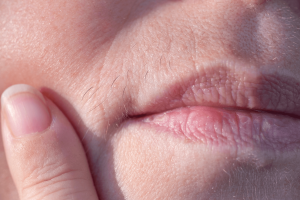If you’ve been told you have polycystic ovaries—or you’re wondering if PCOS – Polycystic Ovary Syndrome (aka Polycystic Ovarian Syndrome) might explain your symptoms—you’re not alone. PCOS is one of the most common hormonal conditions affecting women of reproductive age. But it’s also one of the most misunderstood.
Polycystic Ovaries vs Polycystic Ovary Syndrome
Here’s the first thing to know: having polycystic ovaries doesn’t automatically mean you have PCOS.
Up to a third of women of reproductive age will show a polycystic pattern on an ultrasound. It just means there are more follicles (little fluid-filled sacs) than usual on the ovaries. For many, it’s an incidental finding—picked up when they’re having a scan for something completely unrelated.
PCOS is different. It’s a syndrome, meaning a collection of symptoms caused by a hormone imbalance. And you don’t even have to have polycystic ovaries on a scan to be diagnosed with PCOS. That’s right—you can have normal-looking ovaries and still have the condition.
What Causes Polycystic Ovary Syndrome?
We don’t know the exact cause, but we do know it’s multifactorial and likely genetic. There tends to be familial clustering, but no single gene has been pinpointed.
At its core, PCOS is driven by hormonal imbalances—particularly elevated luteinising hormone (LH) and insulin resistance. This double whammy sets off a domino effect, not only affecting the menstrual cycle, but also causing many other physical symptoms:
- Raised hormone levels of LH causes irregular ovulation, in turn causing irregular menstrual cycles and fertility problems because of fewer chances to conceive
- The ovaries are nudged to make more testosterone (the ‘male hormone’) than oestrogen
- Insulin resistance boosts the production of free testosterone, thanks to reduced sex hormone-binding globulin (SHBG)
- The rise of the androgen level (testosterone) in the bloodstream leads to symptoms like acne, hirsutism (excess facial/body hair), and oily skin
In about 40% of women with PCOS, LH is significantly raised, typically due to excess production by the anterior pituitary gland.

Polycystic Ovary Syndrome Symptoms: What to Look Out For
The symptoms can vary, and many women don’t experience all of them. But here are the classic signs:
- Irregular periods or absent periods (oligomenorrhoea)
- Acne and oily skin
- Excess hair growth (face, chest, tummy)
- Scalp hair thinning or hair loss
- Weight gain or difficulty losing weight, often centrally distributed
- Fertility issues (due to less frequent ovulation)
- Low mood or depression
What Are the First Signs of PCOS?
For many women, the symptoms begin in adolescence, though for some it may not become obvious until their 20s or even later. One of the earliest clues is usually irregular periods—especially if you’re having fewer than nine periods a year, or if your cycles are unusually long and unpredictable.
We tend to avoid diagnosing teenagers with PCOS until at least eight years after their first period, since younger women naturally tend to have more ovarian follicles, which can muddy the diagnostic waters.
The Vicious Cycle of Weight and Hormones
Unfortunately, once the hormonal changes of PCOS kick in, they can fuel further weight gain, especially around the tummy area. And as weight increases, so does inflammation and insulin resistance, which worsens the hormonal imbalance.
It becomes a loop. But the good news is—we can break it.
Diagnosis: How We Investigate Polycystic Ovary Syndrome
At Essex Private Doctors, we take a thorough approach to diagnosis. This often includes:
- Hormone blood tests (to check LH, FSH, testosterone, SHBG, and more)
- An ultrasound scan of the ovaries (but remember—not essential for diagnosis)
- Insulin resistance checks, including HbA1c or fasting glucose
- Cholesterol testing, as PCOS increases cardiovascular risk
We look at your symptoms, medical history, and blood test results as a whole to build a clear picture.

Is Polycystic Ovary Syndrome Dangerous?
PCOS in itself isn’t immediately dangerous—but it can increase your risk of more serious health problems over time if it’s not properly managed.
The hormonal imbalance that underpins PCOS, particularly the combination of insulin resistance and elevated testosterone, can set the stage for:
- Type 2 diabetes
- High cholesterol
- High blood pressure
- Heart disease
- Sleep apnoea
- Endometrial hyperplasia (thickening of the womb lining), which—if left unchecked—can increase the risk of endometrial cancer
This is why regular bleeding is important—even if you don’t have periods. If you’re not on hormonal contraception, you’ll need to have at least four bleeds per year, either naturally or with progesterone tablets, to protect the womb lining.
So, while PCOS may not feel life-threatening, the long-term health implications shouldn’t be ignored. The good news? With the right treatment and regular monitoring, most of these risks can be dramatically reduced or avoided altogether.
It’s not just about your periods or your skin.
PCOS Treatment: Tailored to You
There’s no “one-size-fits-all” treatment for PCOS, but here’s what we know helps:
- Lifestyle and Weight Loss
If you’re overweight, losing even 5-10% of your body weight can:
- Improve ovulation
- Restore regular cycles
- Reduce androgen (testosterone) levels
- Increase chances of pregnancy
- Reduce your risk of diabetes
- Addressing stress and sleep, both of which play into hormonal balance
We often recommend a low-GI diet to stabilise blood sugar levels and improve insulin sensitivity. This is where our in-house dietitian can be an enormous help.
- Medications
- Metformin: Helps improve insulin resistance and can promote regular periods.
- GLP-1 receptor agonists (like Mounjaro and Wegovy): Can support weight loss and insulin sensitivity.
- Hormonal contraception: The combined pill or progesterone-only pill helps regulate periods and reduce testosterone-driven symptoms.
- Progestogens: Taken every three months to induce a bleed if you’re not on the pill.
- Mirena coil: A great option for both contraception and womb lining protection.
If you’re struggling with fertility, ovulation-inducing medications like Clomid can be prescribed in secondary care.
Can We Cure PCOS Permanently?
Here’s the honest answer: there’s no “permanent cure” for PCOS—but it is entirely manageable, and in many cases, the symptoms can be reversed or controlled to the point where you feel completely well.
PCOS is a lifelong condition for many, but how much it impacts your life depends greatly on how it’s managed. What’s often referred to as a “cure” is really remission of symptoms—where periods become regular, ovulation resumes, and testosterone levels normalise.
Our role is to guide you through a sustainable plan—not just quick fixes. We combine medical treatments with tailored dietetic and lifestyle support so you can thrive in the long term.
Your Next Step: Get the Right Support
PCOS can feel overwhelming—but the right support can make all the difference.
Whether you’re concerned about your fertility, frustrated by your skin and weight, or just want to know whether you might have PCOS, we’re here to help. We’ll take the time to listen, test appropriately, and give you practical, evidence-based options.
Don’t suffer in silence or try to manage it all on your own. Book an appointment today.



